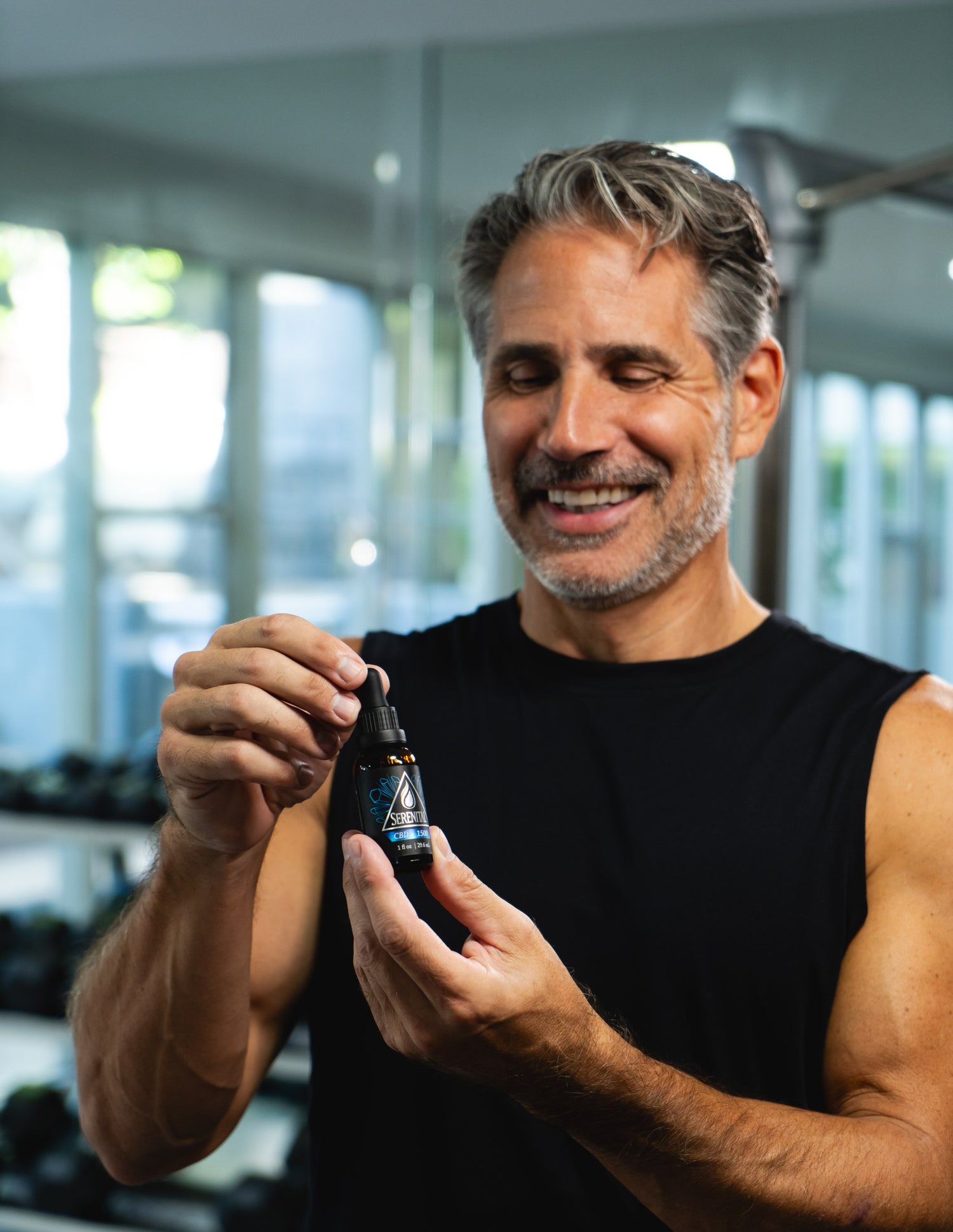How to Use CBD: A Guide to CBD Oil

Here at Serenital, we carry a diverse selection of CBD oils, offering a wide variety of potencies and additional ingredients.
For years, oil tinctures have been recognized as one of the most effective CBD delivery methods. But as other forms of CBD populate the market--such as CBD gummies, CBD capsules, and topical CBD products--customers new to CBD oil often wonder what amount of CBD they should take; how they should consume their dosage; and what to expect as they start a new tincture.
For this reason, we’ve prepared a guide with answers to some of the most common questions about how to use CBD oil, including recommended dose; how to take CBD sublingually; and the difference between CBD oil and other delivery formats. Read on to learn everything you need to know about starting a new CBD tincture.
What is CBD Oil?
About CBD Tinctures
Oil tinctures are one of the most common CBD delivery formats, and provide a variety of advantages compared to other forms of CBD. Serenital CBD oils are packaged in 30ml amber bottles, and capped with measured glass pipettes, which make it easy to know how much CBD you’re extracting for each daily dose.
Our CBD oils are created with two simple, all natural ingredients:
- CBD Isolate, a high-purity, high-potency hemp extract containing 0% THC (unlike full spectrum CBD products containing less than 0.3% THC).
- Carrier Oil, which provides a base and delivery matrix for our base ingredient (CBD). Because CBD dissolves in fat rather than water, carrier oils are especially important to the effectiveness of the final product--which is why Serenital uses MCT oil, rich in medium chain triglycerides, to optimize CBD’s absorption and therapeutic effects.
CBD Oil vs. Other Delivery Formats: Factors to Consider When Starting a New Tincture
Whether you’re new to CBD oil altogether, or new to Serenital’s tinctures in particular, there are a few key factors to keep in mind when transitioning to this form of CBD--especially when it comes to dosage and duration of effects. For instance, if you’re accustomed to taking CBD gummies or CBD capsules, switching to a tincture might require a modification of your usual dose and dosing frequency. Compared to other delivery formats--such as CBD gummies and CBD capsules--oils tend to offer faster-acting effects. Moreover, CBD oils work best when used in consistent amounts at regular intervals of time--whereas a topical CBD product for joint pain can be applied liberally on an as-needed basis.
How to Take CBD Tincture Sublingually
CBD tinctures are taken sublingually, or under the tongue, to maximize absorption and therapeutic effects. Using a CBD tincture requires just two, simple steps:
- Open your bottle of CBD, and extract the desired dosage, measuring using the marked, glass pipette attached to the cap of your Serenital tincture. These measurements make it easy to determine the amount of CBD you’re withdrawing from the bottle.
- Drop the CBD oil directly under the tongue and hold for at least 30 seconds (holding for 60 to 90 seconds may further increase absorption). This is known as sublingual use, which allows CBD to reach the bloodstream faster by absorbing into the capillaries (or veins) concentrated beneath the tongue.
How Often Should You Take CBD Oil?
Here at Serenital, we recommend a personalized approach to your CBD oil regimen. Taking CBD oil at least once daily will likely result in more consistent, sustained therapeutic effects, but depending on the concerns you’re hoping to manage with our products, you may need to redose more frequently--to that extent, we suggest taking an “as needed” approach when it comes to how frequently you take CBD, based primarily on what you need to achieve symptom relief.
Studies suggest that in humans, effective doses of CBD range from 20 to 1500 milligrams per day, describing a favorable safety profile for dosages in this range. Based on this research, we recommend avoiding a daily dosage that exceeds 1500 milligrams, unless your healthcare provider or specialist recommends otherwise. If you’re not experiencing symptom relief at 1500mg daily, you might consider adding a supplementary product to your regimen, such as a CBD topical or a CBG tincture--both of which can complement and amplify CBD’s therapeutic effects.
However, these guidelines vary from one individual to the next--depending on your metabolism, unique body chemistry, and wellness goals, you may find yourself wanting to use CBD just once daily, or to redose several times throughout the day. The process of determining your ideal dosing frequency is similar to the process of determining your ideal dose--it involves starting modestly, and increasing over time, as you monitor your progress toward your desired effects.
Serenital’s Guide to CBD Oil
Consult with Your Doctor First
First and foremost, Serenital recommends that customers consult with a healthcare provider before beginning any new CBD product, including our own--especially if you’re taking any medications, as CBD may interact with certain prescription drugs. Once you’ve cleared your new CBD product with your doctor, you can proceed to the next step in establishing your CBD oil routine--determining your ideal dose.
Determining Your Ideal Dose
When it comes to CBD oil, there is no universally recommended dose--finding the correct dose is a highly personalized process that depends on a variety of individual factors, such as metabolism, weight, and desired effects.
When trying to determine which amount of CBD is right for you, the best approach is to “start low and go slow,” gradually increasing or decreasing, until desired effects are achieved. This also allows your body to adjust to CBD in the process, reducing the likelihood of any initial side effects--such as drowsiness, dizziness, or dry mouth--that could result from starting with too high of a dose.
Here at Serenital, we recommend starting with a relatively low dosage--which could range from 20 to 50 milligrams, depending on what you’re comfortable with--and slowly increasing over time, while monitoring your body’s response.
During this period, you should monitor your body’s response to CBD, especially as dosage increases.
You may notice that you’re experiencing more benefits (that stress is increasingly reduced, or discomfort becomes increasingly manageable) as your dose goes up, which means that you’re close to finding the right amount of CBD for you.
Once you feel that you’ve achieved your desired effects--that your stress has been significantly reduced, or that your joint pain no longer hinders your everyday life--you’ve likely found your ideal dose.
Establishing a Consistent Dosing Routine
Once you determine your ideal dosage, it’s critical to maintain a consistent dosing routine. One of the best ways to achieve sustained, long-lasting benefits from CBD oil is to use it consistently, since the cannabinoids it contains help to regulate the endocannabinoid system (ECS) to establish a state of internal equilibrium to promote optimal, overall wellness:
For this reason, you should:
Disclaimer: The statements herein have not been evaluated by the US Food and Drug Administration (FDA) and any information herein is not intended to aid any reader in the diagnosis, treatment, curing or prevention of any disease or other medical condition.


